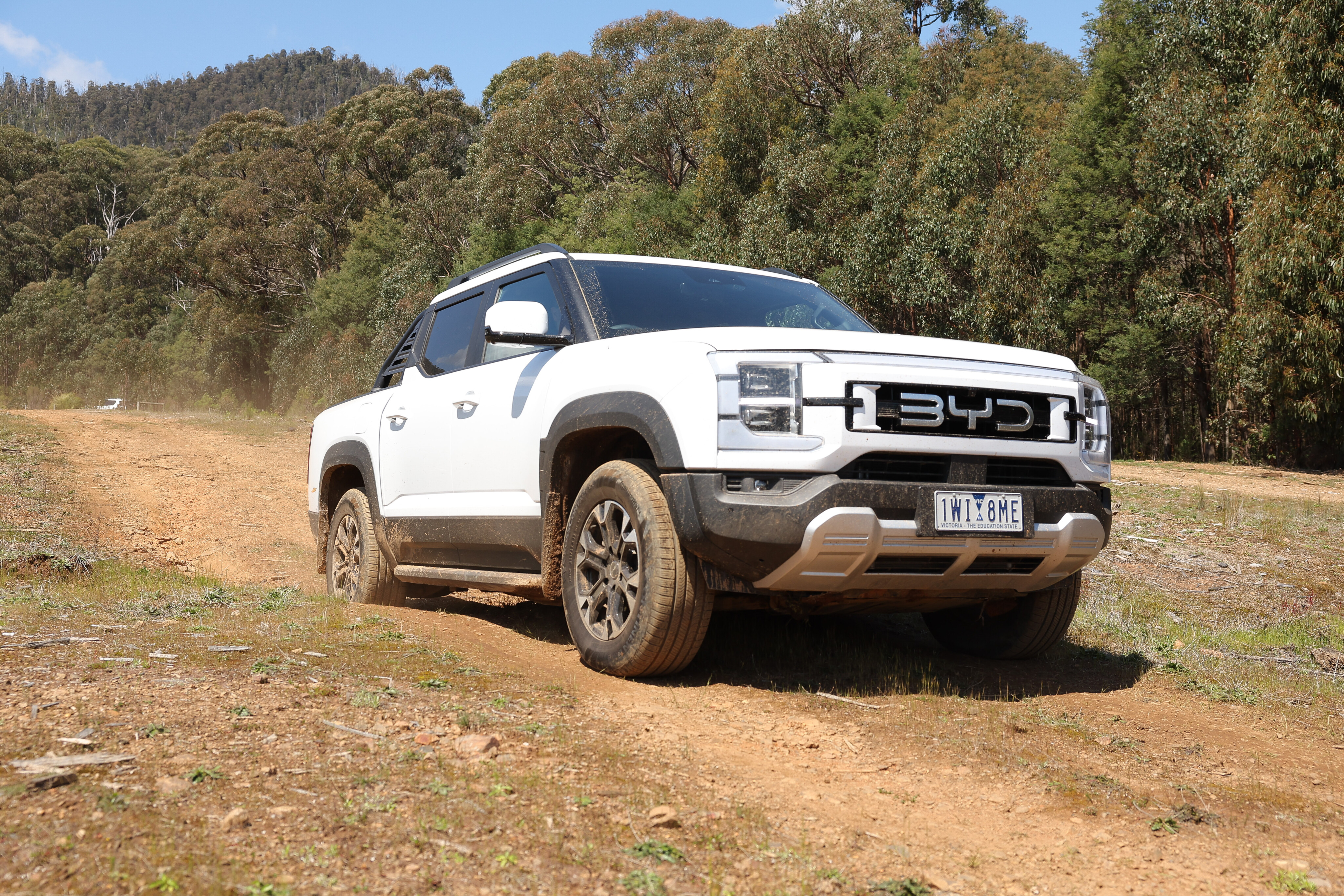
BYD will launch Australia’s first PHEV mid-size 4x4 ute on October 29, when the order books open on the Shark 6 double-cab pick-up – customer deliveries will begin in December.
Pricing and full details on the new Chinese ute will be revealed on October 29, so keep an eye on our website for those numbers on the day.
Senior BYD management told us they realise the burgeoning brand doesn’t have the decades of history in the popular Australian ute market that top-selling marques do, and as such the highly specified Shark 6 will be priced accordingly and very competitively.
The Shark 6 will beat the upcoming GWM Cannon Alpha PHEV to market by a few months, and the PHEV Ranger by a few months more.
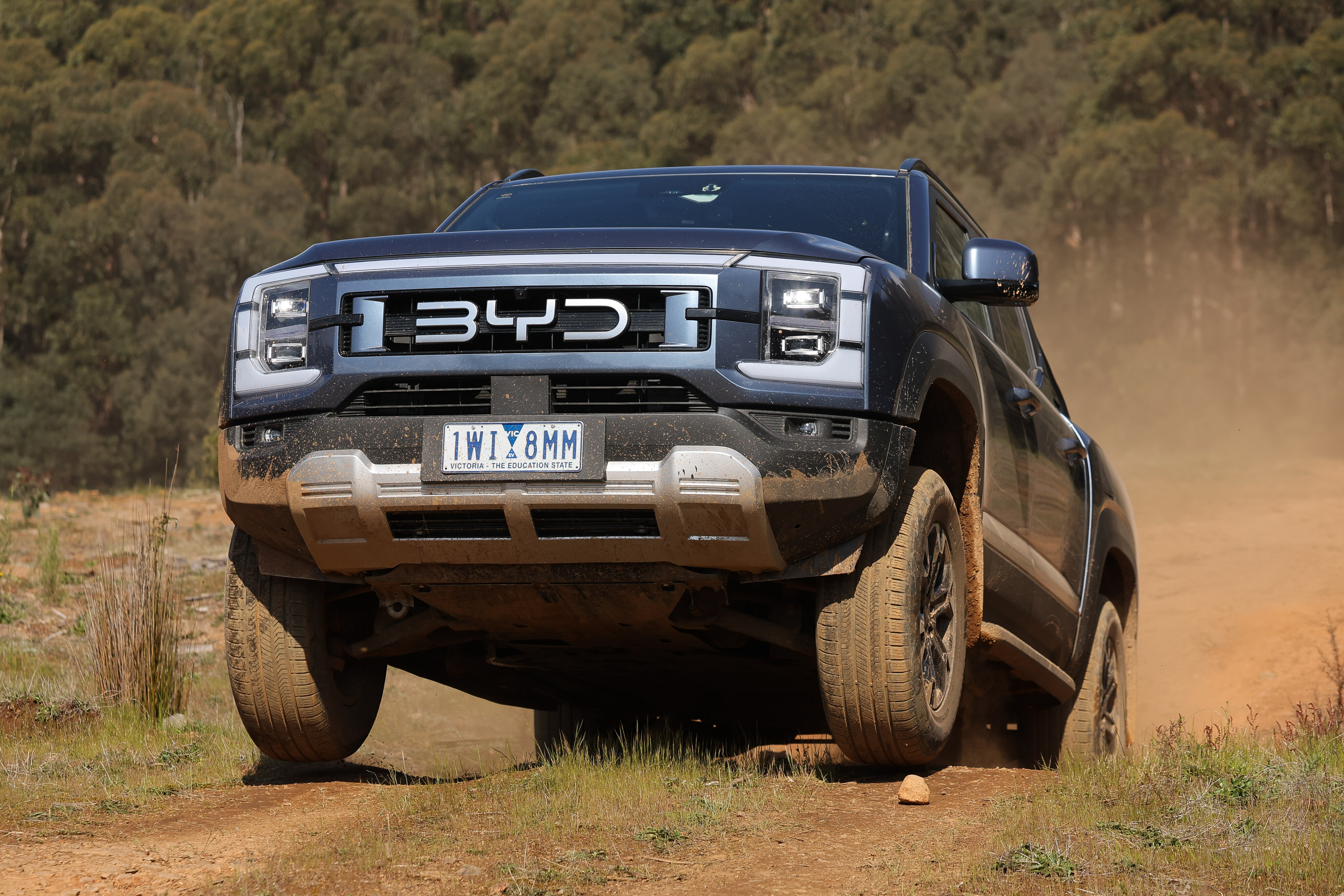
Before the Shark goes on sale, we had the opportunity to sample the Premium model in prototype form on a short drive on the tracks at the foothills of the Victorian High Country. We came away with the belief that, if the price is right, the BYD Shark could be in the sights of plenty of Aussie ute buyers.
Four-wheel drivers might not be too familiar with the BYD brand, but it is the biggest seller of EVs in its home country by a long mile and you’ll see plenty of marine life-named passenger car models on Australian roads already. The Australian arm of BYD intends to match that success here and early indications are that it is well on its way. It sold 12,000 cars here in 2023 and is expecting to sell 20,000 in 2024, with plans to double its sales each year going forward.
To reach those ambitious targets, BYD knew it would need to have a contender in the mid-size 4x4 ute segment from where Australia’s top-selling vehicles are coming from. Enter the Shark 6.

BYD passenger cars include both PHEV and BEV models, but the Shark only comes as a PHEV which is the only configuration suitable for the longer distances Australians drive in their 4x4 utes.
PHEV means Plug-in-Hybrid Electric Vehicle, so it has both an electric powertrain and an internal combustion engine (ICE), and the EV battery can be charged both by plugging into a charger and on the run from the ICE. Keep putting fuel into the Shark’s 60-litre tank and your range is endless, but BYD says the Shark should be good for around 800km between fill-ups/charging stops.
The PHEV drivetrain combines a 1.5-litre turbocharged Miller-cycle petrol engine that is mounted longitudinally in the front of the Shark with a pair of electric motors, one each for the front and rear axles. The ICE engine makes 260Nm and the electric motors make 310Nm and 340Nm front and rear respectively. Combined, that’s enough to propel the 2710kg Shark from zero to 100km/h in just 5.7 seconds; almost half a second quicker than a Ranger Raptor!
The ICE engine spends most of its time charging the Shark’s 29.58kW/h ‘Blade’ battery pack, and fully changed that should be enough for around 100km of pure EV driving. That’s enough EV range to cover the distance of most folks’ daily commute. Need more and the ICE can send drive directly to the front axle as well as charge the battery pack. As said earlier, a hybrid like this is the only EV powertrain to make sense for Australian touring use.
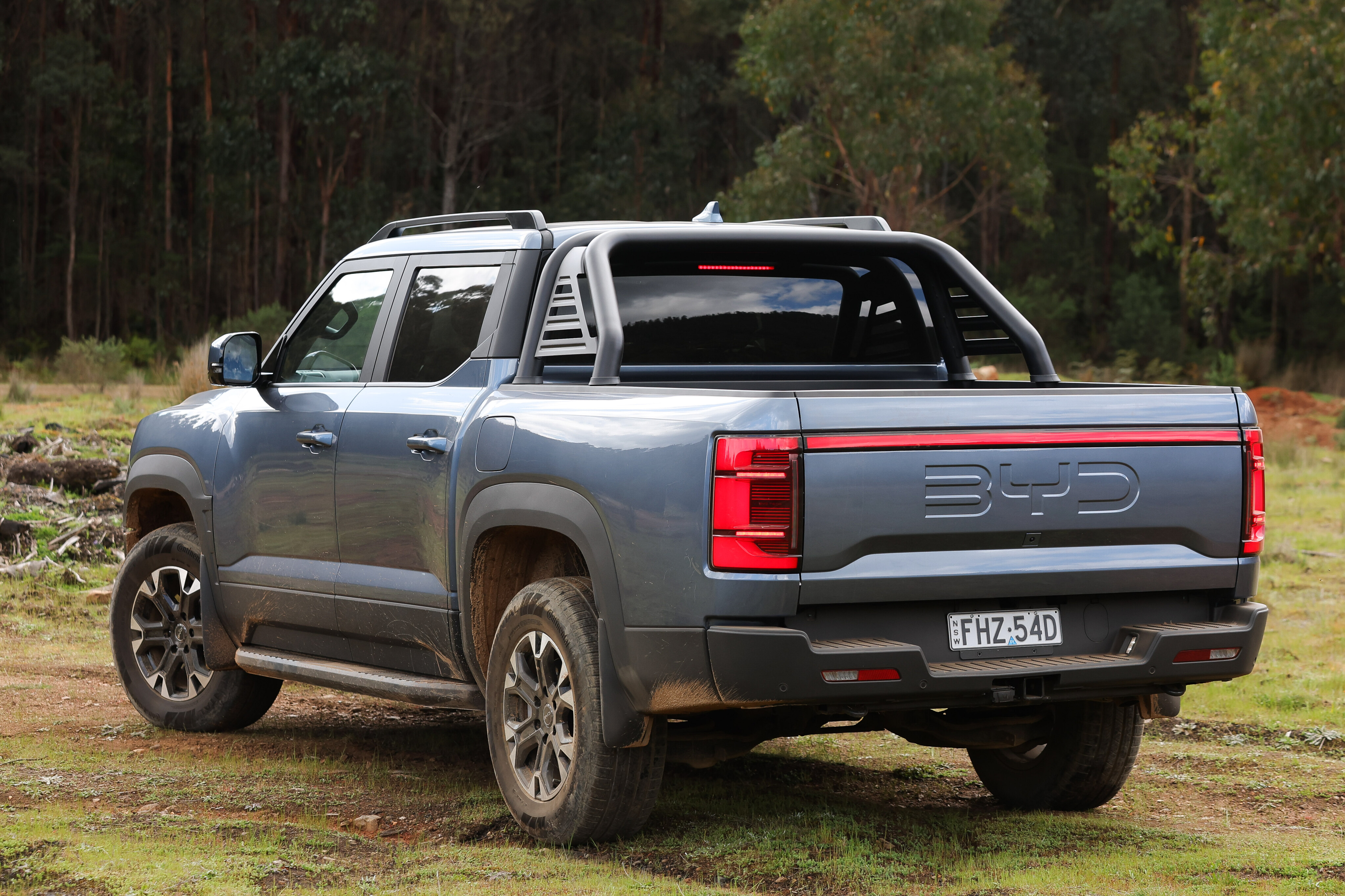
The Shark is a typical body-on-frame, four-door ute, but the frame was specifically designed to be part of a PHEV and not adapted from anything else. The front suspension is a typical double wishbone, coil spring independent design, just like you’ll find under most other utes in this class, but things begin to look a bit different at the back-end.
With no gearbox or drive shaft running from the front of the car to the rear axle, the rear-end is also a double wishbone, coil spring independent configuration, with drive shafts running out from the differential to each rear hub. The full independent suspension configuration improves the dynamics of the Shark ute. The brakes are discs all around and the tyres are sensible 265/65-R18s fitted to alloy wheels.
The Shark is similar in size to the current model Ford Ranger and may be a touch bigger in some dimensions. It measures 5457mm in length and rides on a 3260mm wheelbase. It’s 1971mm wide, with a 160mm wheel track both front and rear.
The styling is also very Ranger-like, with that huge BYD insignia in the grille ensuring that no-one misses the branding.
On- and off-road
The Shark 6 we drove on this day was a pre-production prototype, but a very late one, meaning it was very close to what we can expect of the vehicle that goes on sale in December. It was a premium grade model, which is very highly specified.
The high spec is evident when you step inside the Shark and you’re met with a 15.6-inch multimedia screen that is able to rotate 90 degrees to be viewed in either portrait or landscape layout, depending on preference. The screen features wireless connectivity for both Apple and Android connections, and there’s a 50-watt wireless phone charger that has a fan to cool your device while it is charging.
Unfortunately there is a lack of manual dials or buttons, with most functions needing to be accessed via the multimedia screen. The driver’s information screen is a 10.5-inch screen, and there’s also a heads-up display.
This teaser drive shows a lot of promise in terms of its high levels of equipment, performance and size
The seats are faux leather-covered and are power adjustable, heated and ventilated in the front. The rear seat is spacious by mid-size ute standards, offering a bit more leg and headroom than the current popular models.
With its large battery on board the Shark features 230-volt AC outlets in both the cabin and the cargo tub, which are claimed to be able to power tools and camping accessories. There’s also an array of USB-A and USB-C outlets in the cabin.
The body shape is unashamedly boxy, giving the Shark a purposeful look. The designers say you can see the look of a shark in the front-end styling, but it was beyond my imagination. LED lighting is used for the headlights and around the vehicle. The Shark is fitted with a tow bar and is limited to a 2500kg capacity.
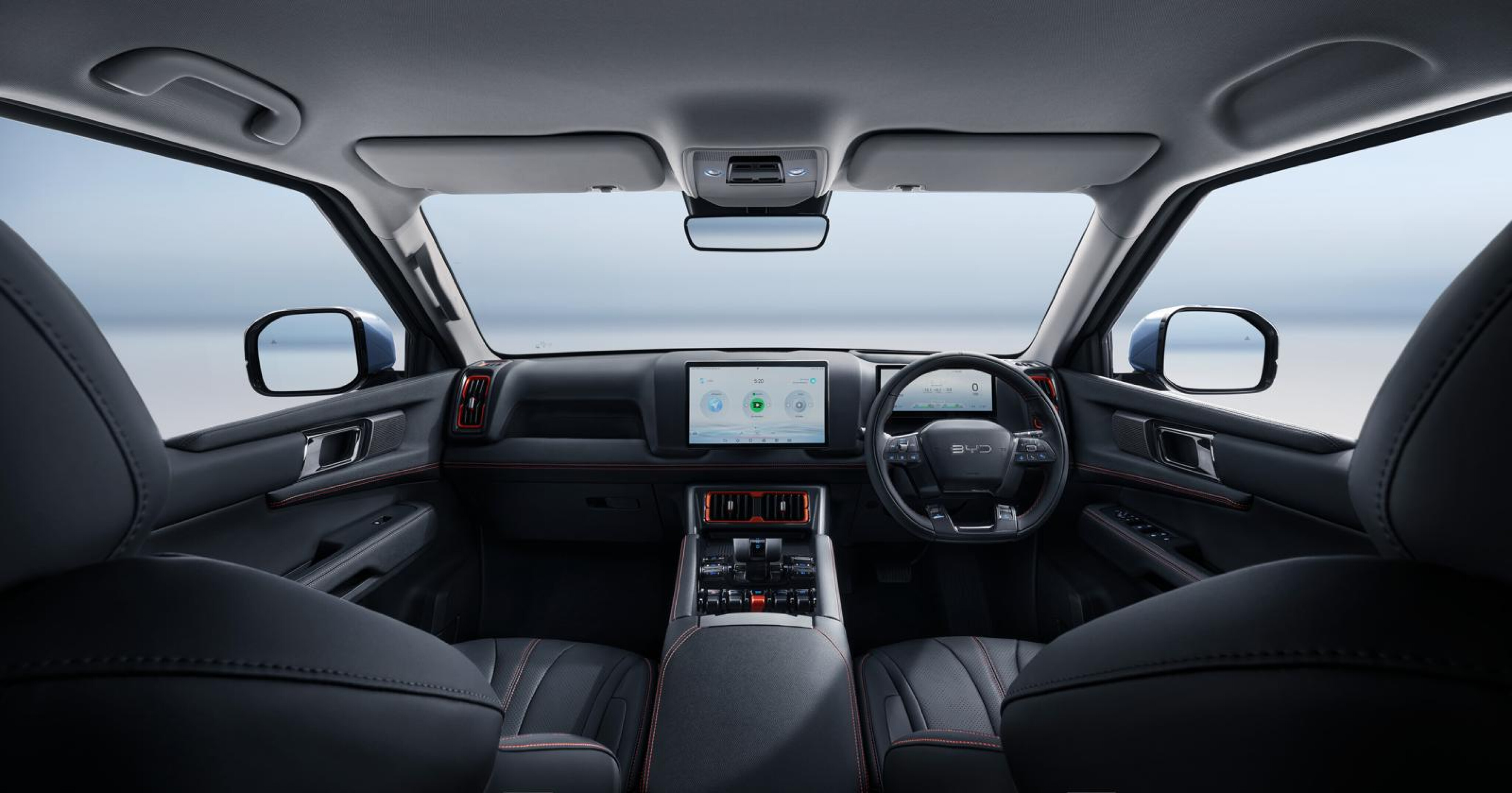
For safety’s sake, the Shark is fitted with all modern ADAS features up to and including a driver monitor camera, and BYD is predicting it will achieve a five-star rating by the latest 2024 standards. The driver monitor didn’t bother us on this short drive, and I didn’t know it was there aside from spotting the camera on the A pillar.
Our drive was on mountain tracks, where the Shark felt more at home than any marine animal should. The suspension is firm but not uncomfortably so, and it walked its way over ruts and erosion mounds without a problem. Nor was ground clearance an issue, only slightly dragging but not damaging the back bumper when climbing up a steep bank.
With its electric motors and lack of a conventional transmission, the Shark also forgoes a transfer case and any low range reduction gearing. Torque is distributed electronically between the front and rear axle, and each has their own motor; while cross axle torque distribution is via a more conventional electronic traction control system.
With no mechanical link between the front and rear axles, and open differentials in each of them, the system is capable of sending 100 per cent of the power to the single tyre with the most grip, something that can’t be achieved with a locked transfer case and/or differential.
The Shark does have multiple drive modes – Mountain, Sand and Snow – that control the way the throttle and tractive systems are applied for various terrains. While this worked well on the tracks, we found it to be too slow in reacting when we pointed the Shark up a steep bank and one or two wheels lost traction. Admittedly, the highway tyres didn’t have a hope on the wet surface, but we know from experience that the leading ETC system in other mid-size utes would have done better.
When we pointed this out to the BYD staff they said this is something they will look at and it could be tuned in the software controlling the system. We’ll have to wait until we get more time in the production version to see how they go with that.
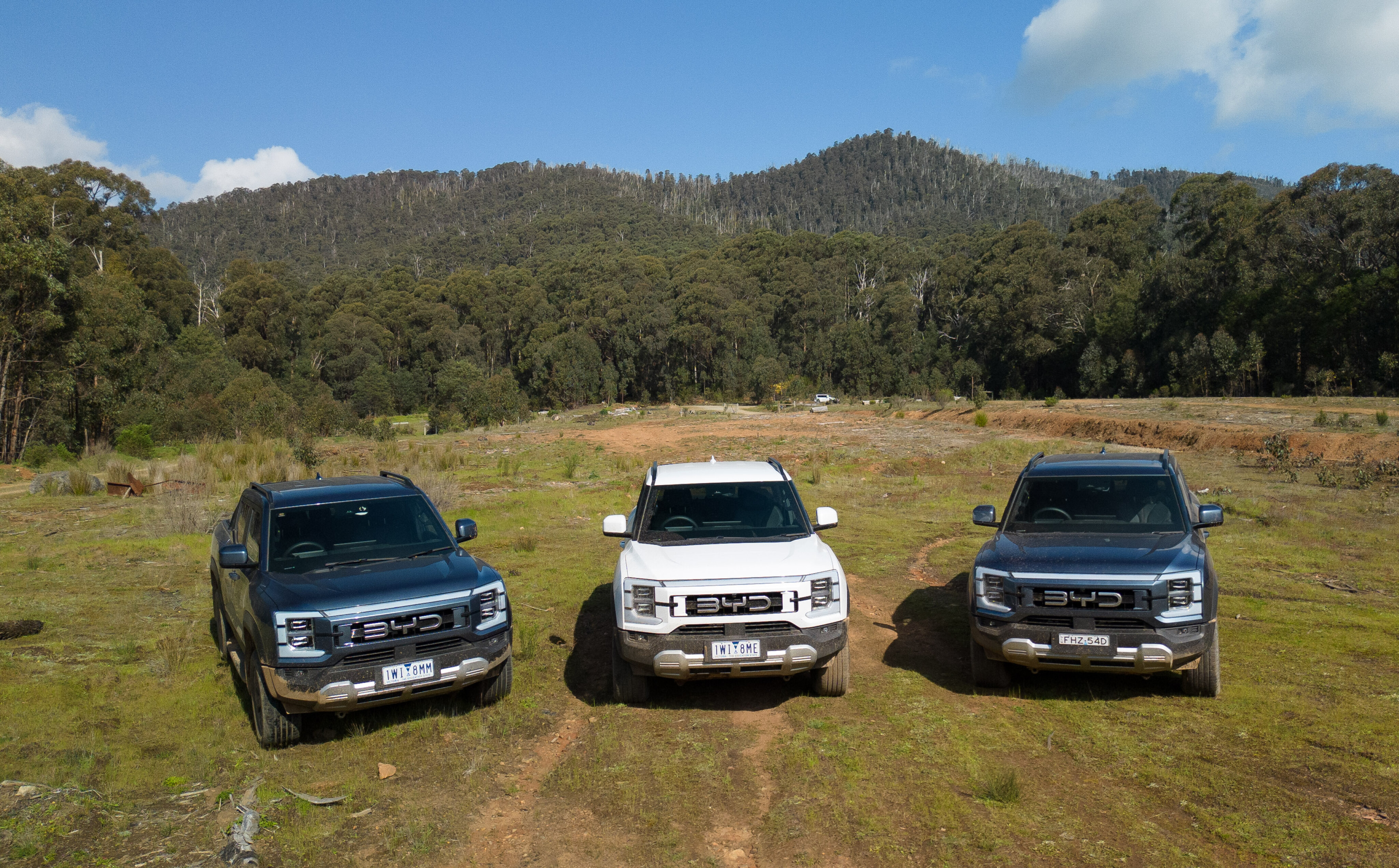
Likewise, we’ll need to wait until the launch to comment on the on-road characteristics as the prototypes could only be driven on a private property. On the little sealed roads we did cover it felt taught and well mannered, but it wasn’t enough to give a proper assessment.
There’s a lot yet to discover about the BYD Shark 6 when it goes on sale here, but this teaser drive shows a lot of promise in terms of its high levels of equipment, performance and size.



COMMENTS